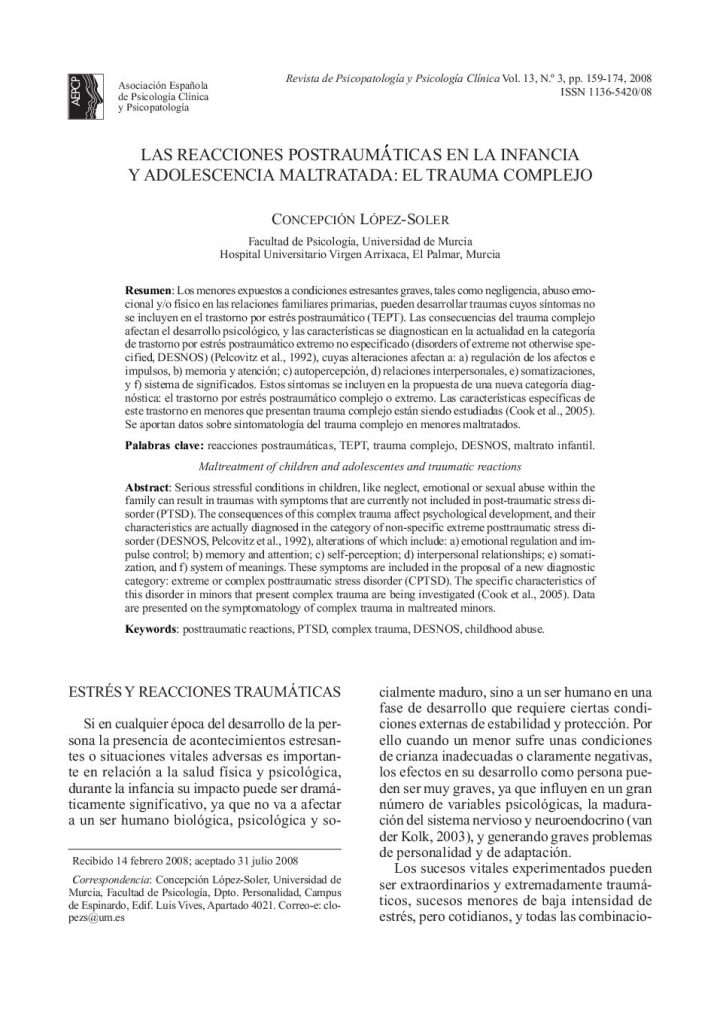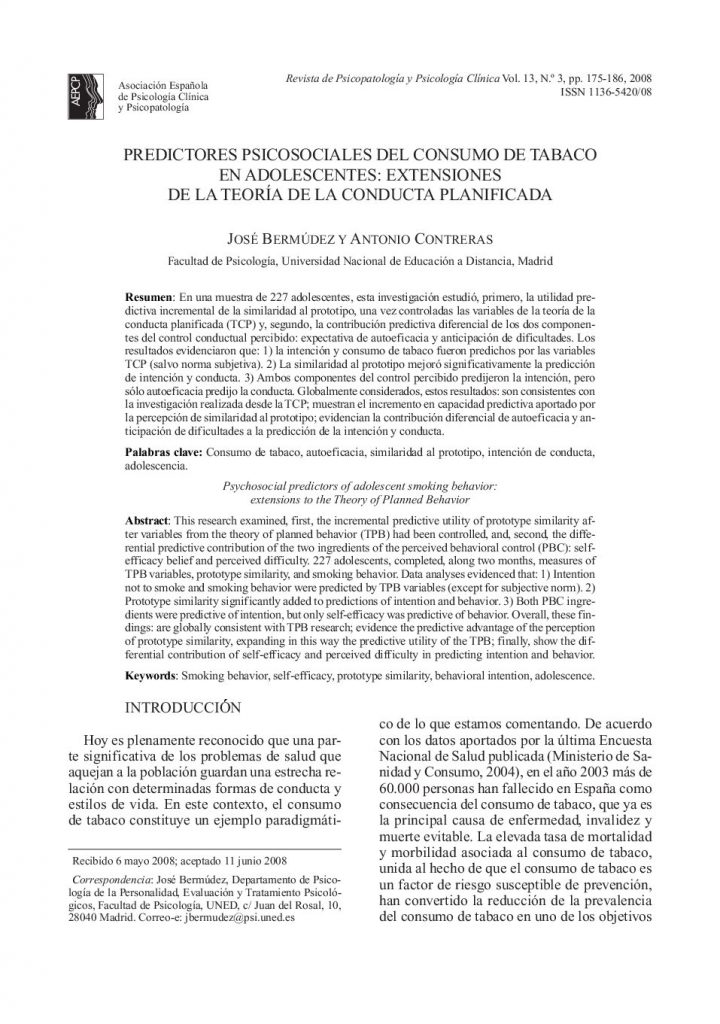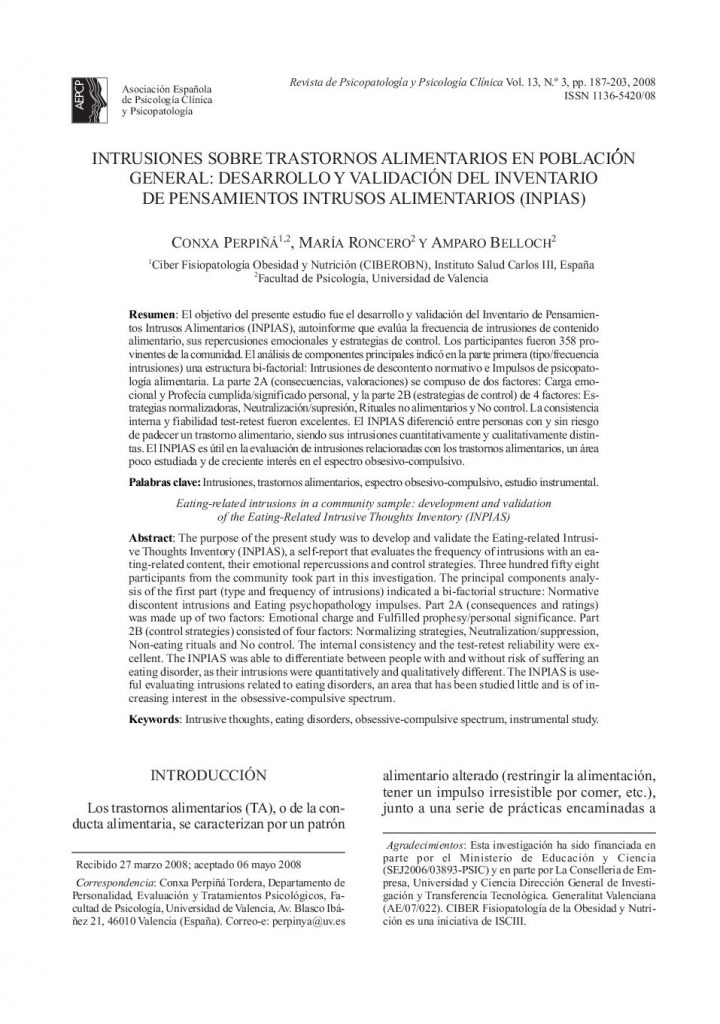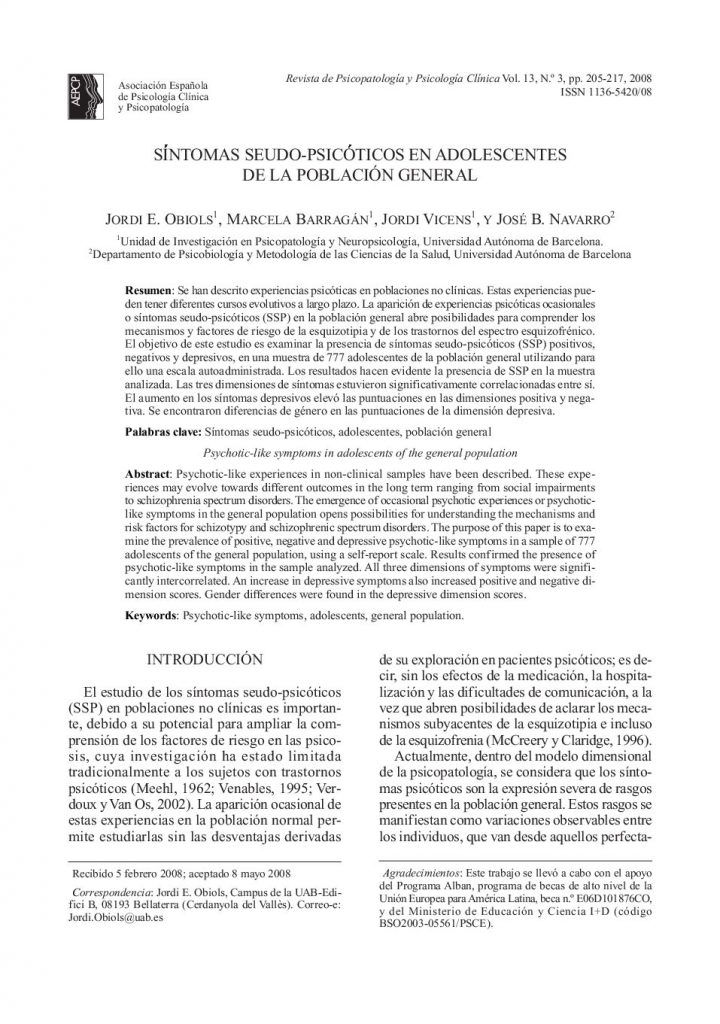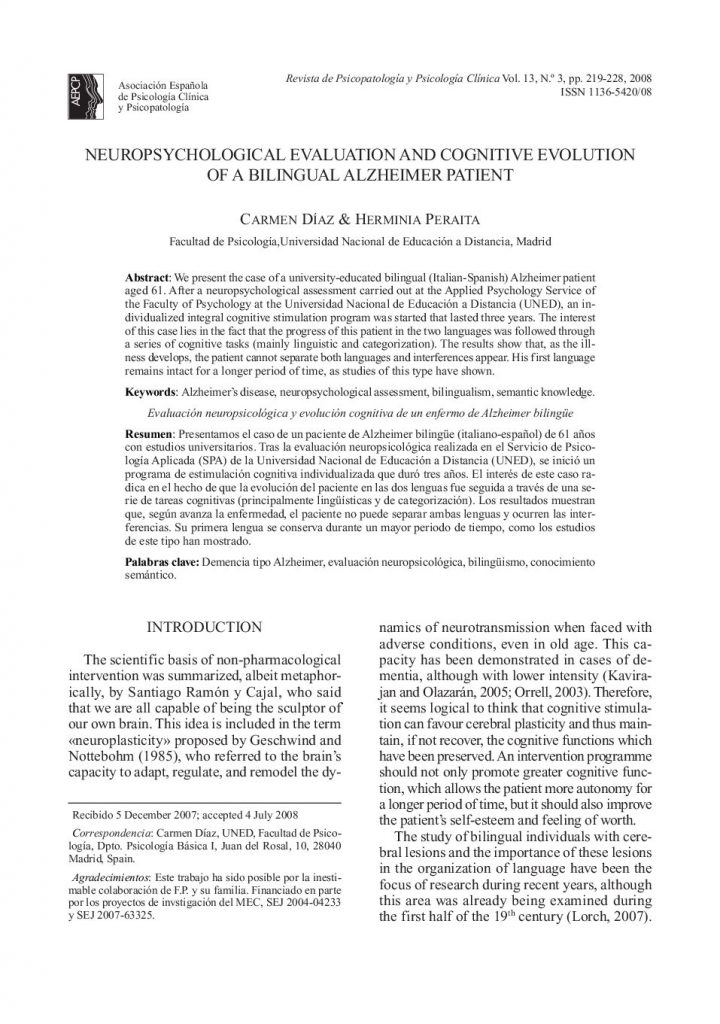Sensibilidad al asco: Concepto y relación con los miedos y los trastornos de ansiedad.
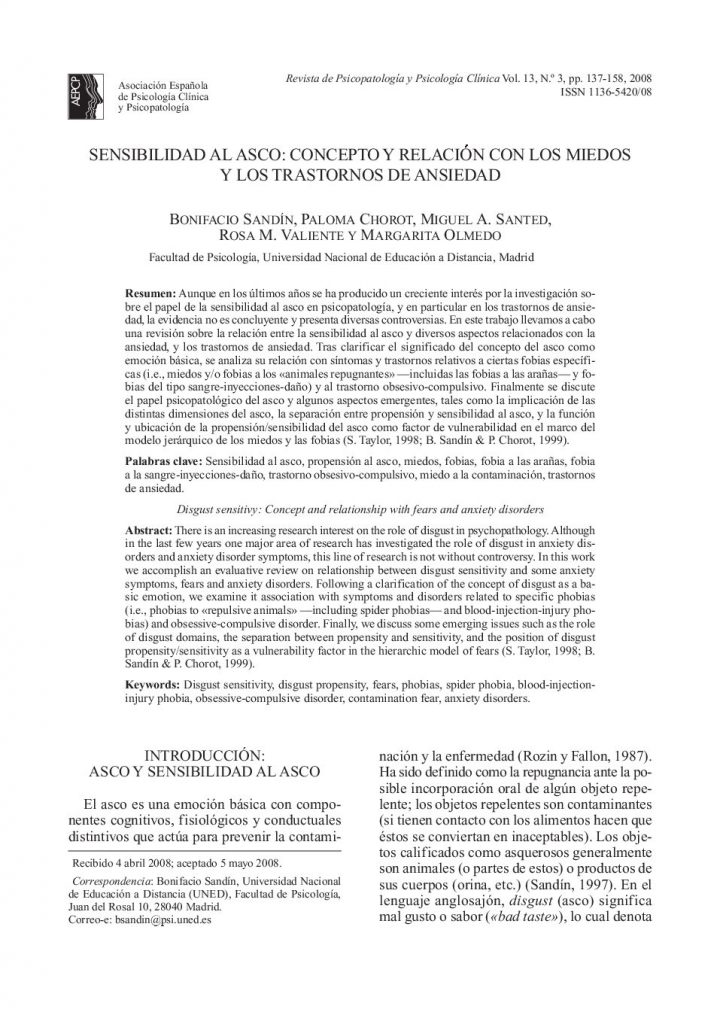
- Sensibilidad al asco: Concepto y relación con los miedos y los trastornos de ansiedad.
- Las reacciones postraumáticas en infancia y adolescencia maltratada: El trauma complejo.
- Predictores psicosociales del consumo de tabaco en adolescentes: Extensiones de la teoría de la conducta planificada.
- Intrusiones sobre trastornos alimentarios en población general: Desarrollo y validación del Inventario de Pensamientos Intrusos Alimentarios (INPIAS).
- Síntomas seudo-psicóticos en adolescentes de la población general.
- Evaluación neuropsicológica y evolución cognitiva de un enfermo de Alzheimer bilingüe.
- Información sobre criterios de calidad de la Revista de Psicopatología y Psicología Clínica.
There is an increasing research interest on the role of disgust in psychopathology. Although in the last few years one major area of research has investigated the role of disgust in anxiety disorders and anxiety disorder symptoms, this line of research is not without controversy. In this work we accomplish an evaluative review on relationship between disgust sensitivity and some anxiety symptoms, fears and anxiety disorders. Following a clarification of the concept of disgust as a basic emotion, we examine it association with symptoms and disorders related to specific phobias (i.e., phobias to “repulsive animals” –including spider phobias- and blood-injection-injury phobias) and obsessive-compulsive disorder. Finally, we discuss some emerging issues such as the role of disgust domains, the separation between propensity and sensitivity, and the position of disgust propensity/sensitivity as a vulnerability factor in the hierarchic model of fears (S. Taylor, 1998; B. Sandin & P. Chorot, 1999).
Aunque en los últimos años se ha producido un creciente interés por la investigación sobre el papel de la sensibilidad al asco en psicopatología, y en particular en los trastornos de ansiedad, la evidencia no es concluyente y presenta diversas controversias. En este trabajo llevamos a cabo una revisión sobre la relación entre la sensibilidad al asco y diversos aspectos relacionados con la ansiedad, y los trastornos de ansiedad. Tras clarificar el significado del concepto del asco como emoción básica, se analiza su relación con síntomas y trastornos relativos a ciertas fobias específicas (i.e., miedos y/o fobias a los “animales repugnantes” –incluidas las fobias a las arañas- y fobias del tipo sangre-inyecciones-daño) y al trastorno obsesivo-compulsivo. Finalmente se discute el papel psicopatológico del asco y algunos aspectos emergentes, tales como la implicación de las distintas dimensiones del asco, la separación entre propensión y sensibilidad al asco, y la función y ubicación de la propensión/sensibilidad del asco como factor de vulnerabilidad en el marco del modelo jerárquico de los miedos y las fobias (S. Taylor, 1998; B. Sandin & P. Chorot, 1999).



